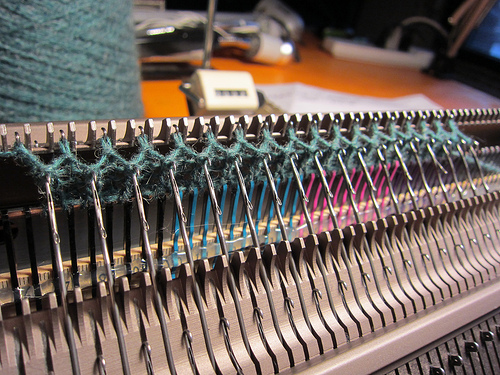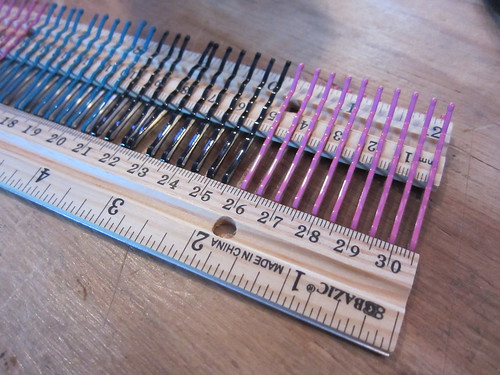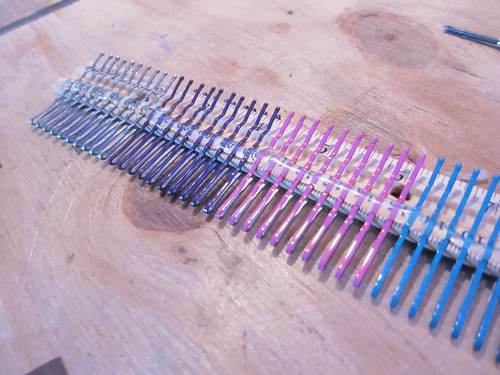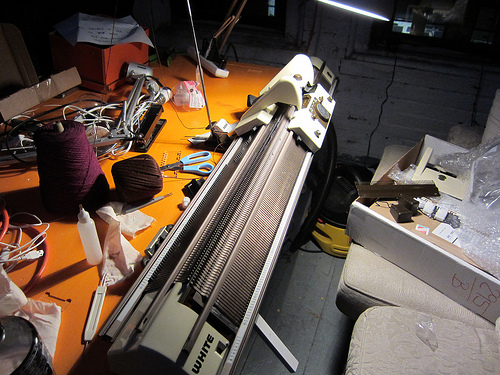The White/Superba 1602 I purchased sadly did not include a full-bed cast on comb, which makes casting on things wider than swatches somewhat tricky. There are a few floating around eBay, but they all seem to be $50 and/or in France, and shipping a three foot long steel comb from France to the US isn’t particularly cheap. Also, I am impatient. I’m told that a knitting machine store in Toronto also has some, but again, impatient.
So I set out to make my own. The comb consists of small metal teeth which go in between each stitch, and a rod which is threaded through holes in the top of the teeth to trap generic propecia the yarn in place. I made a 12″ long test comb to see if it would work before committing to a whole yardstick worth of bobby pins and hot glue.
I purchased 4 packages of bobby pins and some wooden rulers at the local dollar store. I then arranged the bobby pins at 5mm intervals along the ruler, since the Superba machines are 5mm machines.
I used a second ruler (they were 3 for $1!) to make sure the pins were all at an even height and that they retained their 5mm spacing. Then I ran a line of hot glue along both sides to hold things in place.
To use the comb to cast on ribbing, you run the carriage/yarn across the needles to establish a zig-zag of yarn across the bed. Then you push the cast on comb up between each stitch, and run a rod through the top of the comb. This traps the yarn between the rod and the ruler below, letting you appropriately tension the yarn for the first row of stitches.
As you knit, the comb pulls the fabric down between the two beds. A weight is attached to each end to provide tension. In this photo, I’ve lowered the front bed to make it easier to see what the comb is doing. You can just barely see the small copper rod at the bottom of the fabric.
I used it to knit a gauge swatch for a sweater I plan on knitting soon. It’s a mini-cable rib pattern. The cables are worked by hand, which is pretty tedious though I’m slowly getting faster at it.
My dollar store comb is by no means as good as the real thing, but it works pretty well for $2 worth of materials. It has a few key issues which make it a little tricker to use than a normal cast on comb. First, the end of the bobby pins are just a little bit too wide, I have to set the bed spacing all the way up to 6 in order to get them to fit through. Second, the bobby pins get in the way of the holes used to hang the weights. And my DIY comb is nowhere near as durable as the steel one. But it works well enough for now.








